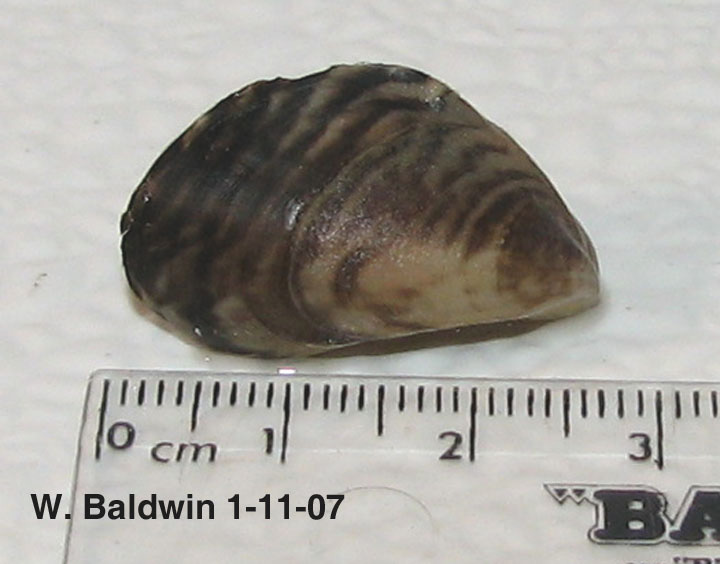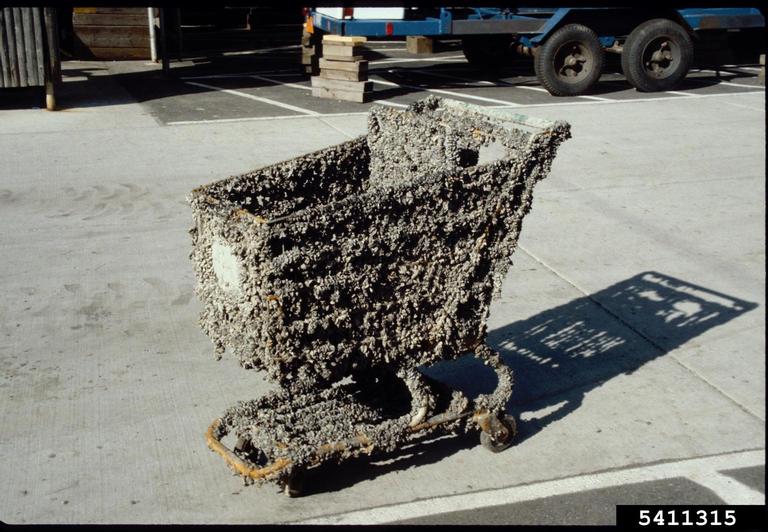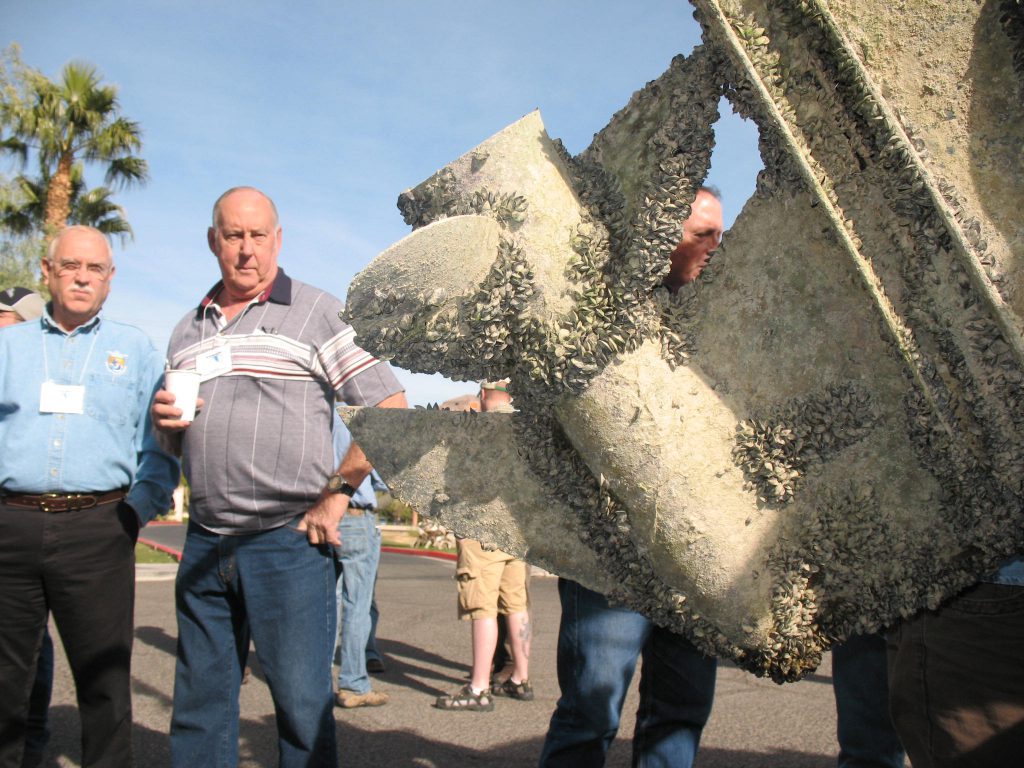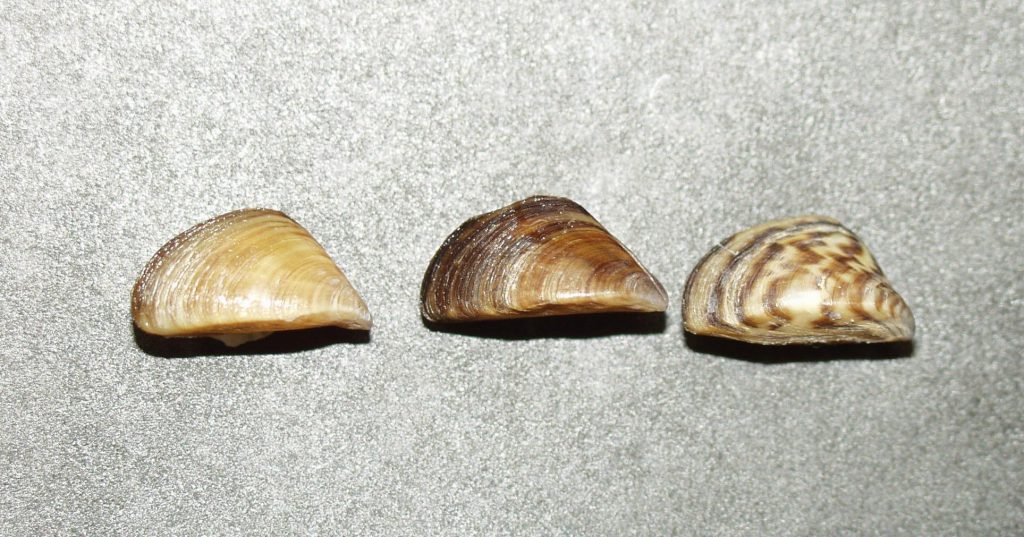Zebra mussels (Dreissena polymorpha) and quagga mussels (Dreissena bugenis)
What Are They?
Zebra and quagga mussels are freshwater mollusks that colonize lakes and rivers. Their preferred habitats include the calm waters upstream of dams. They are most abundant on hard, particularly rocky surfaces.
Are They Here Yet?
No, but they are only a day’s drive away. In 2023, Idaho detected quagga mussels in the mid-Snake River. A rapid response was triggered, and a treatment was quickly applied. In 2024, the Idaho State Department of Agriculture announced a small number of quagga mussels s6ill present in its waters. It is continuing treatment, with the hopes of eradication. These invasive mussels attach themselves to boats, so if someone uses a boat in an infected lake and then launches the boat in Washington waters, they could be introduced here. The Washington Department of Fish and Wildlife has an early detection program, but everyone’s help is needed to spot them before they become a problem.
Why Should I Care?
These species could cost taxpayers hundreds of millions of dollars a year and close down access to state waters for recreation and commercial opportunities. They clog water intake pipes and filters, reducing water pumping capabilities for power and water treatment plants. Once established, these mussels will change ecological systems and food sources critical to native mussels and species such as salmon and trout.
How Can We Stop Them?
- Clean, drain, and dry all watercraft and equipment before using them in another water body to prevent spreading the mussels. It is illegal to transport, possess, or release these species, and there are severe penalties for doing so. Boaters should thoroughly wash and decontaminate boats when traveling from an area known to have populations of these mussels (e.g. Lake Mead).
What Are Their Characteristics?
Zebra Mussels
- Adults range from 1/8 to 2 inches long.
- Mostly white or cream with jagged brown or black stripes across a D-shaped shell.
- Byssal threads (or ropes) are on the hinge edge of its shell. These threads are unique to zebra and quagga mussels and are not found on native mussels.
Quagga Mussels
- Shell is normally striped.
- Byssal threads (or ropes) are on the hinge edge of its shell.
- The adults are slightly larger than the zebra mussels. They can be up to 8/10 inch wide and more than 2 inches in length.
- Shell is more rounded (fan shaped with pointed edges at either side) on the hinge edge than zebra mussel shells. A shell placed with its hinge edge on a table will roll off the hinge.
- The shells of the quagga mussels are thinner and lighter when they live on soft surfaces, and thicker and heavier when they live on hard or rocky surfaces.
How Do I Distinguish Them From Native Species?
Zebra mussels are relatively small (typically the size of an adult fingernail) with thin shells of variable coloring, often with stripes or zig-zag patterns. They are triangular in shape and sit flat on ventral side. Quagga mussels are usually light tan to almost white, with narrow stripes, fan shaped, and rounded, and typically larger than the zebra mussel.
Additional Photographs





